Note: This website was automatically translated, so some terms or nuances may not be completely accurate.
Engagement Created by the Inspiring Experience at Yamaha Innovation Road
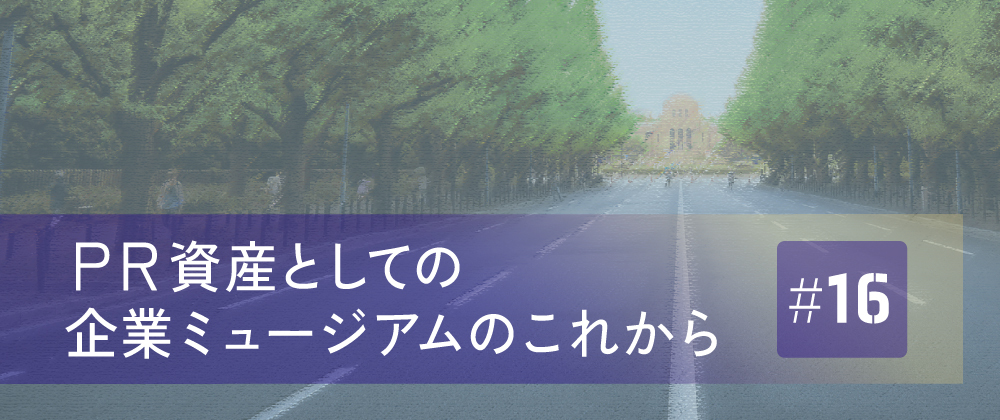
Corporate museums occupy a buffer zone spanning both the academic realm of "museums" and the business realm of "corporations." They are organizations that collaborate extensively with various corporate departments responsible for their operation, such as public relations, branding, advertising, and human resources. In this series, PR professionals will introduce various museums run by corporations, exploring their roles, functions, and potential.
Yamaha, a leading company that has shaped the history of modern and contemporary music in Japan. In 2018, the "Innovation Road" museum opened on the grounds of its headquarters in Hamamatsu City, Shizuoka Prefecture. This museum allows visitors to learn about Yamaha's journey alongside innovations in musical instruments and audio products. This article explores how "Innovation Road" communicates Yamaha Quality and the Yamaha Way, aligned with the company's philosophy of "Creating Joy Together."
Reporting and Text: Yuki Watanabe (PR Consulting Dentsu Inc.)
Yamaha's History
While Yamaha is a household name today, its history dates back to 1887 (Meiji 20). Founder Torakusu Yamaha resolved to build organs after repairing a broken organ at an elementary school in 1887. Two years later, in 1889 (Meiji 22), he established the Yamaha Wind Instrument Manufacturing Company as a joint-stock company in what is now Hamamatsu City, Shizuoka Prefecture. In 1897 (Meiji 30), he established Nippon Gakki Co., Ltd. with capital of 100,000 yen. In 1987 (Showa 62), marking 100 years since its founding, the company changed its name to the current Yamaha Corporation.

While Yamaha is highly recognized in the fields of musical instruments and music, the technology cultivated throughout its history has enabled the company to expand its business into non-instrument sectors. In 1955, the motorcycle division separated and became independent as Yamaha Motor Co., Ltd., producing motorcycles, marine products, and more. Additionally, although no longer in production, the company has a history of manufacturing ski equipment and tennis rackets.
Yamaha's technology has gained further recognition and established its current position by applying the skills and know-how gained from its core musical instrument business to various other fields. This technology is even supplied for interior components in luxury cars.
Operated by multiple departments including General Affairs and Marketing

Innovation Road boasts an exhibition area of approximately 1,500 square meters (450 tsubo). It can be visited by appointment on days other than Sundays, Mondays, and national holidays. Building operations are managed by the General Affairs Department, while planning is overseen by the Marketing Department. The actual operation, including the six staff members led by the director, is handled by Yamaha Corporate Services, a group company. Admission is free.
Despite temporary closures due to COVID-19, over 70,000 visitors (including internal company use) have visited since its opening in July 2018 (as of June 2022). Prior to the pandemic, in 2019, inbound visitors exceeded 1,000 (excluding employees from the company's overseas offices and factories). Visitor pamphlets are available in Japanese, English, and Chinese; the website is in Japanese and English; and the in-museum audio guide is provided in Japanese, English, Chinese, and Spanish.
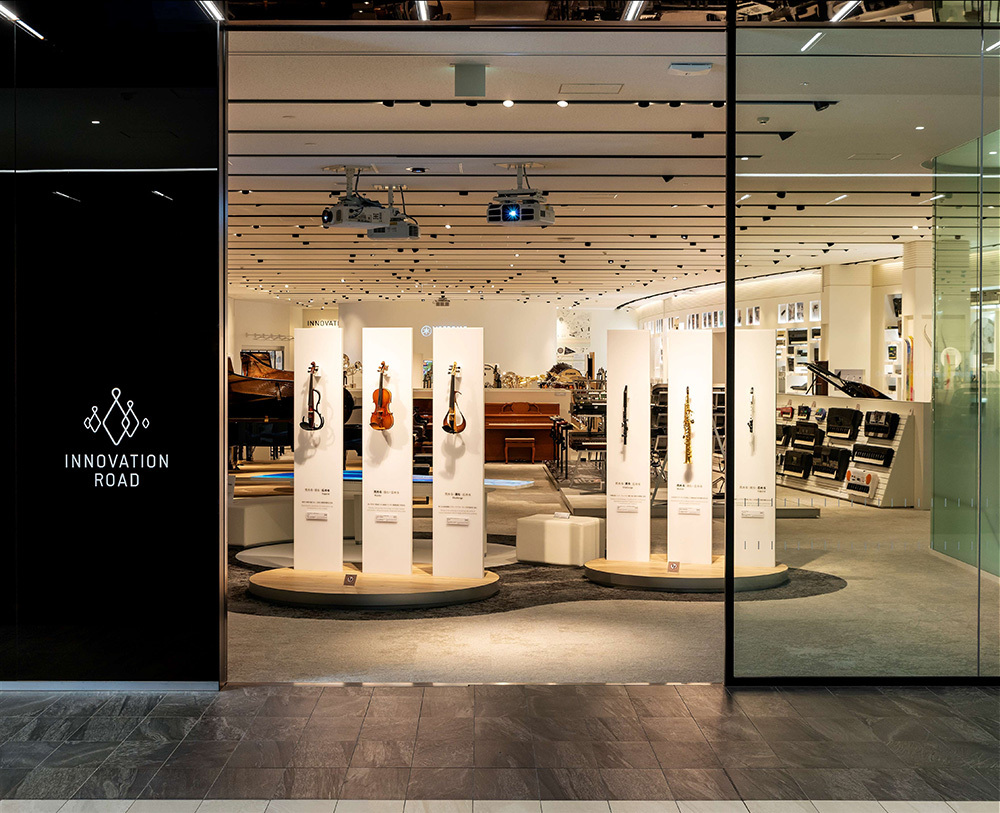
Also used for employee communication
The facility also functions as a communication space for employees, not just external visitors. It is utilized for new employee training and by domestic group employees and overseas factory/office staff visiting Hamamatsu to deepen their understanding of Yamaha's business.
Internally, the Innovation Road has elicited feedback such as "It allowed us to reaffirm our company's history" and "It helped us understand businesses outside our own area of involvement." The ability to review past product lines chronologically appears to be fostering new innovation within the design and development departments.
Furthermore, in 2021, a Virtual Innovation Road was launched. It displays 360-degree images of the museum interior online, allowing users to navigate the space as if physically walking through it while viewing product explanations and video content. This Virtual Innovation Road serves as a tool to broaden understanding of the company not only for general visitors but also for overseas staff unable to travel to Japan during the pandemic.
Trace Yamaha's Footsteps and Experience Innovation
The museum is organized into 12 exhibition areas. True to its name, visitors can trace the history of innovation Yamaha has woven, alongside the actual products. The 12 exhibition areas are as follows.
1. Concept Stage
2. Prologue
3. Manufacturing Walk
4. Musical Instrument Exhibition Area
5. Life Scenes
6. Digital Library
7. Super Surround Theater
8. Innovation Roadmap
9. History Walk
10. Innovation Lab
11. Audio Exhibition Area
12. Virtual Stage
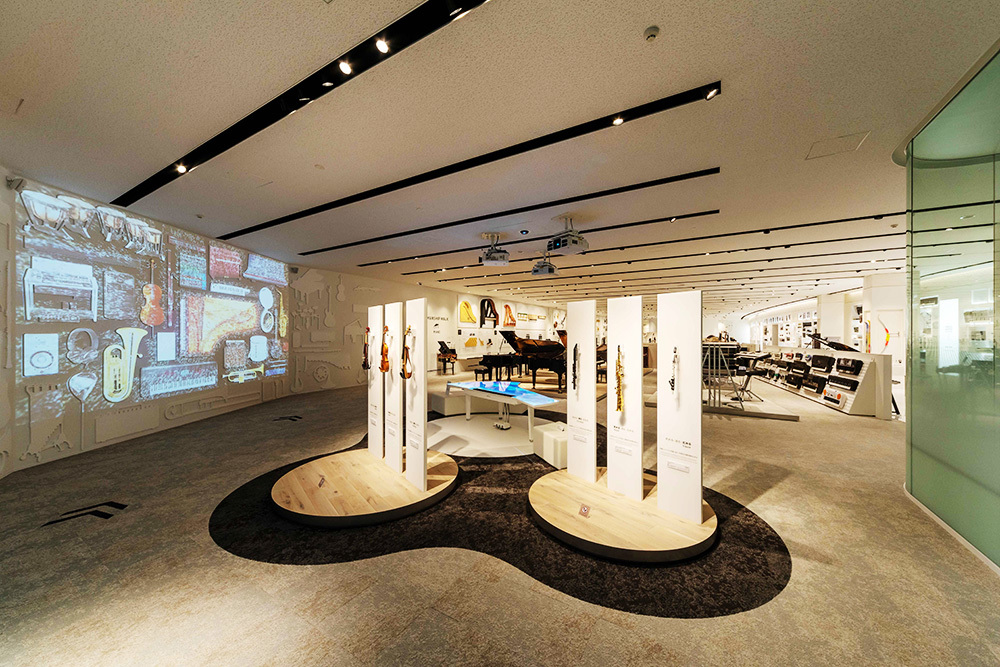
Visitors can see, hear, and touch musical instruments and audio products themselves, of course. They can also experience Yamaha's proposals for incorporating these products into daily life and innovations utilizing the latest technology. It functions as a space where users can "experience" the "past and future" of music culture.
Among its features, the Innovation Roadmap is truly impressive. It's a single scroll that reveals the innovations Yamaha has pioneered throughout its history and the business developments that followed. Starting from a single organ, it clearly illustrates through images and text how the technology expanded in various forms.
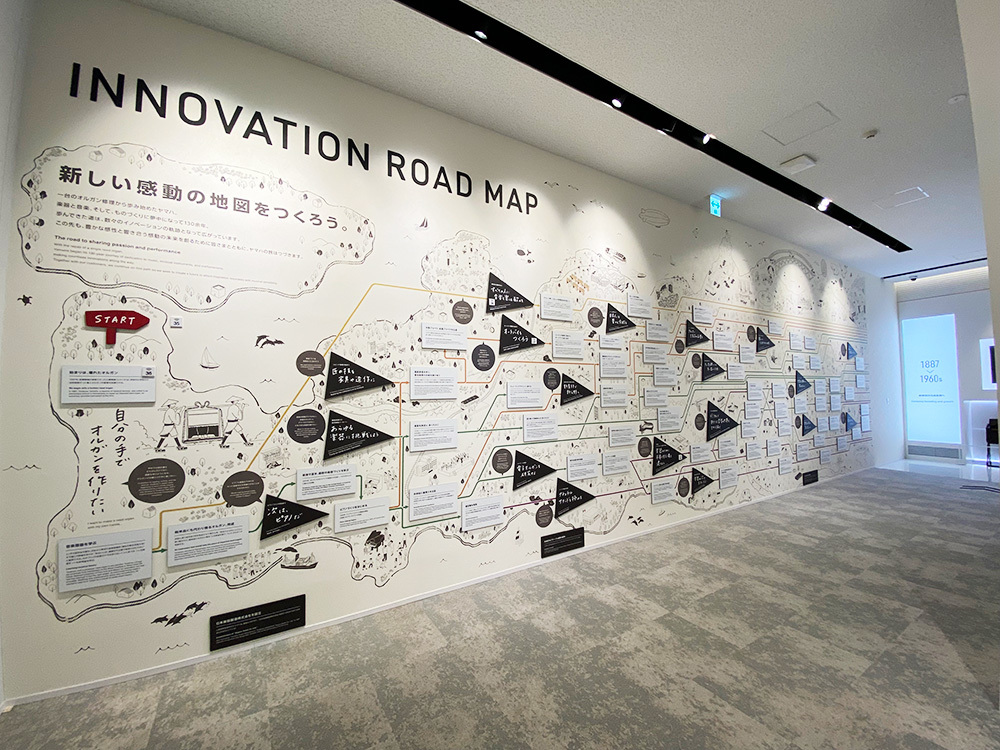
Regarding the instruments featured on the Innovation Road, they aren't merely displayed. Visitors can also witness the masterful craftsmanship behind piano and wind instrument production. Here, one truly appreciates how each instrument is created with the dedication and superb skill of artisans.
Furthermore, while learning about these manufacturing methods, visitors can actually play the instruments themselves. A grand piano from Bösendorfer, an Austrian company that became a wholly-owned subsidiary of Yamaha in 2008 and is considered one of the world's three great pianos, is also on display. This piano, adorned with beautiful decorations, can be tried out, offering a precious experience not found in everyday life. The instruments available to play extend beyond the piano, including guitars, electric violins, electronic drums, and more.

Furthermore, visitors can experience cutting-edge sound technology. The "AI Artist Stage - Creating Music with AI" allows you to perform songs alongside an AI singer or AI saxophonist, utilizing Yamaha's proprietary AI vocal synthesis technology (*VOCALOID:AI™) and its newly developed AI instrument sound synthesis technology. Visitors can use hand gestures to indicate dynamics and other "highlights" in sync with the playing music. In response, musical expressions like vibrato are rendered naturally and in real time by AI technology, creating an experience akin to hearing a real singer perform. This innovation road uniquely showcases the vast potential of contemporary music.
Innovation that captivates both performers and listeners
Each instrument on display possesses its own distinct character, embodying the emotional impact Yamaha has always pursued. Among them, true to the Innovation Road name, are instruments that deliver genuine innovation: the TransAcoustic™ Piano and TransAcoustic™ Guitar. Both products utilize TransAcoustic™ technology, which combines digital functionality with acoustic instrument sound generation.
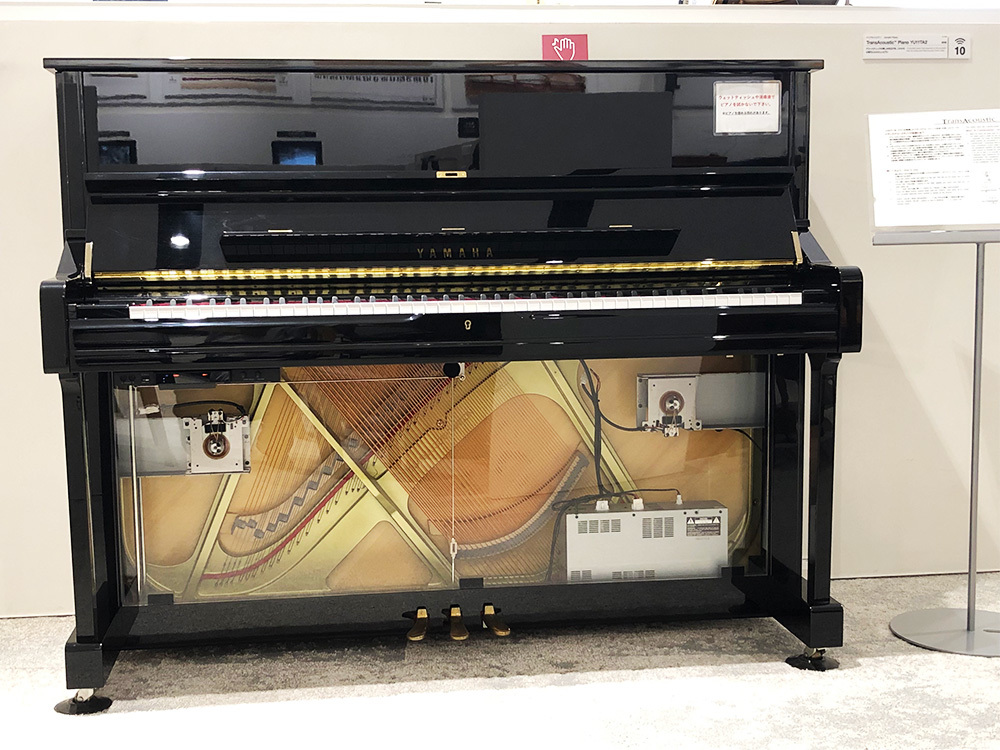 TransAcoustic™ Piano (Photo courtesy: Innovation Road)
TransAcoustic™ Piano (Photo courtesy: Innovation Road)The TransAcoustic Piano allows you to enjoy playing as a conventional acoustic piano. Additionally, by switching to TransAcoustic mode, you can enjoy a wide variety of tones like an electronic piano and adjust the volume.
The TransAcoustic Guitar incorporates an "actuator" inside the guitar body. This allows effects like reverb and chorus to be added to the guitar's natural sound without needing to connect an amplifier or effects unit. The natural guitar sound and the effect sound blend together, resonating throughout the entire guitar body. This creates a sound reminiscent of performing live in a venue, all from the guitar itself.
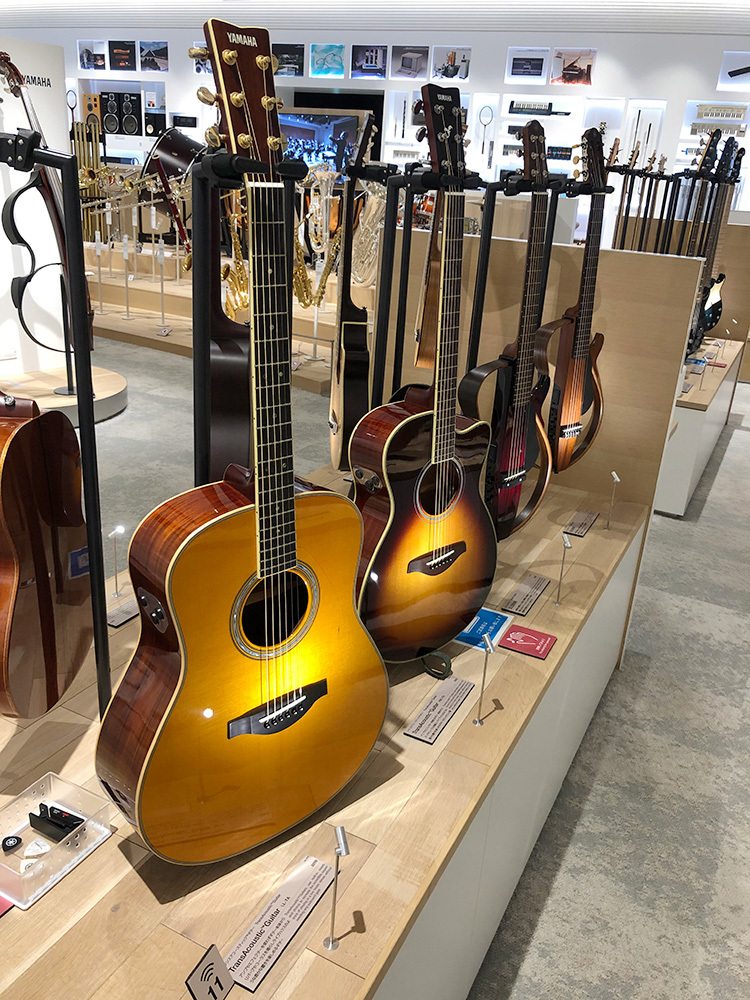
"Creation" Beyond Organizational Boundaries
While Innovation Road offers a deep immersion into Yamaha's history and technology, what is its significance as a museum? We spoke with Director Yasushi Ito. "The intention behind creating the Innovation Road was to foster 'creation' that transcends organizational boundaries. Alongside the construction of the new Building 21 housing the Innovation Road, we gathered engineers who were previously scattered, equipped it with state-of-the-art laboratories, and together with the existing development buildings, Buildings 18 and 20, we call this the Innovation Center. By connecting the three buildings with walkways, we promote cross-organizational exchange while creating a development hub that continuously generates innovation. We hope employees will casually visit the Innovation Road, feel the DNA of our predecessors, and spark new seeds of innovation. We believe this brings us closer to embodying our corporate philosophy: 'Creating Emotion Together Through Music.'"
Embodying Yamaha's commitment to "creating together"
Its mission is to enhance Yamaha's brand value, boost employee motivation, and contribute to society. Serving as a hub that communicates Yamaha's journey from past to future is believed to generate excitement among visitors and deepen engagement with society and employees.
By honoring its own history and reaffirming the tracks of its innovation, Yamaha aims to generate new innovation and give back to society and its employees. In doing so, the Innovation Road embodies Yamaha's commitment to "co-creation," delivering not only the thrill of music but also this shared resolve.
Providing richness and motivation in life
So, what discoveries have emerged since opening the Innovation Road?
"Currently, due to the impact of the novel coronavirus, there are restrictions on activities. However, visitors include many local residents, of course, as well as numerous people from outside the prefecture, primarily from the Tokyo metropolitan area and the Chukyo region. Among them, we often hear from people who no longer play instruments themselves, but who, through their experience at Innovation Road, have rediscovered the beauty of music and expressed a desire to get involved with music again. Hearing such feedback allows us to truly feel that the emotion and passion born through music are very real. Even if it's not for everyone, I feel Innovation Road has the potential to enrich lives and provide motivation. As a corporate citizen, I hope we can continue creating such opportunities as much as possible," says Mr. Ito.
A Museum That Constantly Updates
Finally, we asked Mr. Ito about the future outlook for Innovation Road. "I believe the primary goal is to embody our mission of enhancing the Yamaha brand. Yamaha has introduced various innovations to the world, such as the Silent Piano and TransAcoustic technology, and we take pride in that,"
However, Mr. Ito added.
"On the other hand, we often hear visitors exclaim, 'I had no idea such instruments existed!' This highlights the reality that the true excellence of Yamaha instruments remains largely undiscovered. To change this situation, I strongly believe communication through 'experience' is crucial. We want to update the museum to better convey these wonderful 'experiences' and help people discover them through the Innovation Road. If we can achieve Yamaha's mission and philosophy beyond that, I believe the Innovation Road can become a powerful catalyst for 'creating emotion together' with people."
Engagement Born from the Emotion of Experience
Innovation Road continues to create emotion for visitors through the experience of music. Here lies the essence of public relations: giving form to a company's vision, spreading it, stirring hearts, and deepening visitor engagement. Innovation Road, which generates so much emotion, will continue to be an indispensable museum for music culture, consistently communicating Yamaha's innovation.
[Editor's Note] (From the Web Dentsu Inc. Editorial Department)
It made me ponder the fundamental question: Why are people so captivated by music? The thought of daily life without music... sends a chill down my spine.
People entrust ineffable emotions to flowers, tea, paintings, fashion, and more. Most of these appeal to the "visual" sense. Among them, music stands as one of the few art forms that stimulates the "auditory" sense. But think about it: this world is made up of all kinds of sounds—the rustle of wind, birdsong, the murmur of a river, the clang of a shishi-odoshi water feature. Life is sustained by being encouraged and healed by each and every one of these sounds.
"Creating emotion together" is a phrase that succinctly captures this truth. Instrument makers, performers, listeners. When the feelings of all these people unite, "emotion" is born. This holds true whether it's a concert by professional artists or a performance by kindergarteners.
When you hear "Yamaha," the piano is probably the first thing that comes to mind. But wait a minute. They also make motorcycles and motorboats, right? It's Yamaha this, Yamaha that. This wasn't just reckless business expansion. It's the result of relentlessly pursuing "Creating Emotion Together" and constantly asking: Can we apply our own technology (Yamaha Quality, the Yamaha Way) to that "emotion"? That's probably what innovation is. The answer always lies within ourselves.
Was this article helpful?
Newsletter registration is here
We select and publish important news every day
For inquiries about this article
Back Numbers
Author

Yuki Watanabe
PR Consulting Dentsu Inc.
Gained extensive experience in website development, owned media construction and operation, and consulting at an IT advertising operations/production company. Served as an external project manager for web media owned by PR Consulting Dentsu Inc. before joining the company in 2017. Subsequently seconded to subsidiary Brave Media, where I worked on launching the business media platform AMP. Currently back at PR Consulting Dentsu Inc., overseeing the entire business including client sales, solution development, and media operations.




